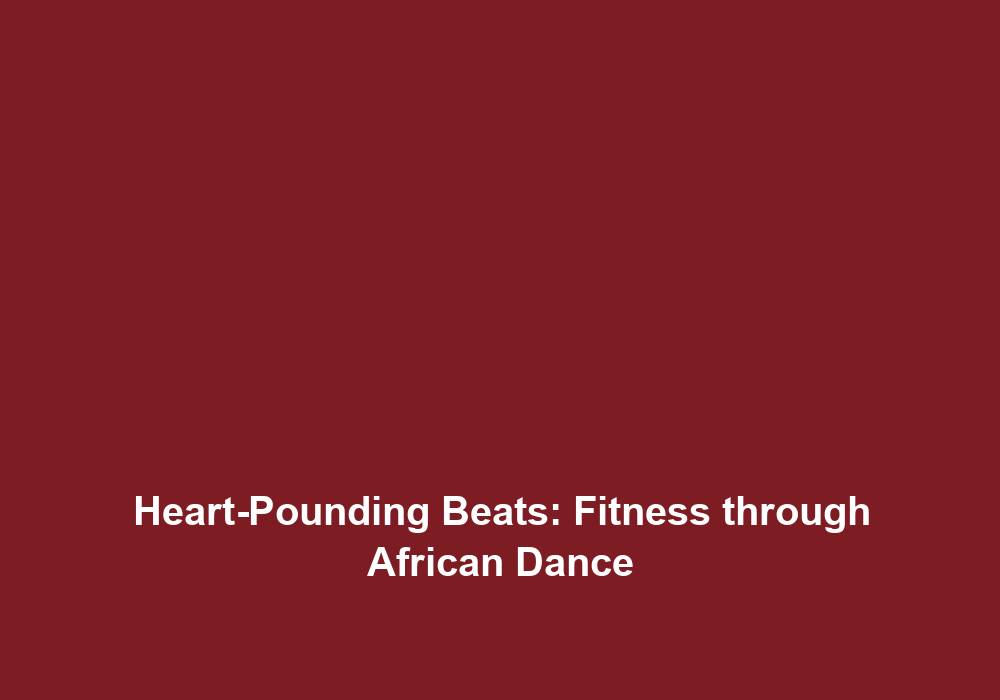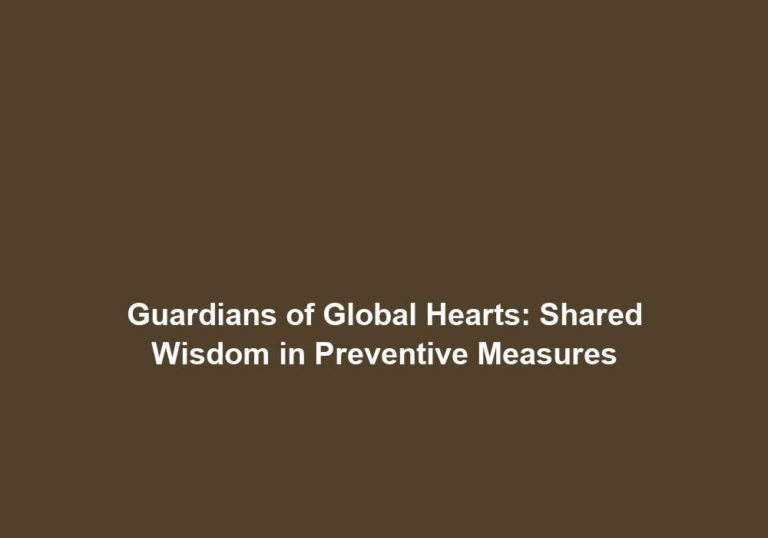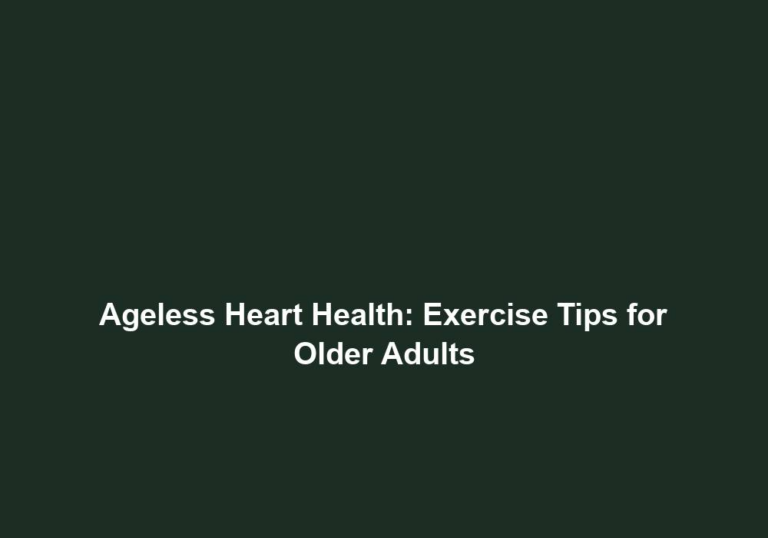Heart-Pounding Beats: Fitness through African Dance
African dance is not only a cultural expression but also a fantastic way to achieve fitness goals. The energetic movements, vibrant rhythms, and rich cultural history make African dance a unique and enjoyable form of exercise. In this article, we will dive into the world of African dance and explore how it can help you achieve your fitness goals.
The Essence of African Dance
African dance is deeply rooted in the traditions, rituals, and celebrations of various African cultures. It encompasses a wide range of styles, each with its own distinct characteristics. From the rhythmic movements of West African dance to the high-energy, fast-paced dances of Southern Africa, there is something for everyone to enjoy.
African dance is a powerful form of storytelling, as it communicates emotions, history, and cultural values. It is often used to celebrate important milestones, such as births, weddings, and harvest seasons. The movements in African dance are not only aesthetically pleasing, but they also carry deep symbolic meanings. For example, the swaying of hips may represent fertility, while the stomping of feet may symbolize strength and resilience.
The Benefits of African Dance for Fitness
-
Cardiovascular Health: African dance is a highly dynamic and aerobic form of exercise. The fast-paced movements and continuous rhythms get your heart rate up, improving cardiovascular health and stamina. The combination of rhythmic footwork, jumps, and turns challenges your cardiovascular system and helps build endurance.
-
Muscle Strength and Endurance: African dance involves a variety of movements that target different muscle groups. From the powerful leg movements to the intricate footwork, you can expect to build strength and endurance throughout your body. The explosive jumps and leaps engage your leg muscles, while the torso twists and arm movements work your core and upper body.
-
Flexibility: African dance incorporates a wide range of movements that challenge your flexibility. The fluidity of the dance steps enhances joint mobility and helps you achieve better overall flexibility. The deep lunges, stretches, and body isolations in African dance improve your range of motion and prevent muscle stiffness.
-
Coordination and Balance: African dance often involves complex footwork and coordination between various body parts. Practicing these movements improves your coordination skills and enhances your overall balance. The intricate foot patterns, syncopated rhythms, and polyrhythms in African dance require precision and body control.
-
Full-Body Workout: African dance engages multiple muscle groups simultaneously, providing a comprehensive workout for your entire body. It helps tone your muscles, burn calories, and improve overall body composition. The combination of cardiovascular exercise, strength training, and flexibility work in African dance ensures that no muscle is left unworked.
-
Increased Energy Levels: The uplifting music and energetic movements of African dance can boost your energy levels and improve your mood. It serves as a great stress-reliever and an excellent way to escape the daily grind. The infectious rhythms and joyful atmosphere of African dance create a positive and invigorating experience.
Getting Started with African Dance
If you’re intrigued by African dance and want to incorporate it into your fitness routine, here are some steps to get you started:
1. Find a Local African Dance Class
Look for local dance studios or community centers that offer African dance classes. Joining a class led by an experienced instructor will ensure you learn the proper techniques and movements while enjoying the supportive atmosphere of a group setting. Learning alongside others who share your passion for African dance can also provide motivation and a sense of community.
2. Warm-up and Stretch
Before diving into the dance routine, it’s essential to warm up your body and stretch your muscles to prevent injuries. Perform dynamic stretches such as leg swings, arm circles, and torso twists to prepare your body for the intense movements ahead. Additionally, incorporating a brief cardiovascular warm-up, such as jogging in place or jumping jacks, can further raise your heart rate and prepare your body for the dance session.
3. Learn the Basic Steps
African dance has a rich repertoire of steps and rhythms. Start with learning the basic steps, such as the side-to-side movements, shuffling steps, and hip rotations. Practice these steps until you feel comfortable and gradually progress to more complex movements. It’s important to focus on proper technique and body alignment to maximize the benefits of each movement and prevent injuries.
4. Embrace the Rhythm and Music
African dance is heavily influenced by lively, rhythmic music. Allow yourself to connect with the beat and let the music guide your movements. Immerse yourself in the cultural experience as you dance to the captivating African rhythms. Pay attention to the different instruments and rhythms within the music, as they often correspond to specific movements or dance styles. Letting the music inspire and guide your movements can enhance the overall enjoyment and authenticity of your African dance experience.
5. Maintain Consistency
To reap the maximum benefits of African dance, consistency is key. Aim to attend classes regularly and practice at home between sessions. The more you practice, the more you will refine your technique and improve your fitness level. Additionally, consistency allows your body to adapt to the demands of African dance, leading to greater strength, endurance, and flexibility over time. Remember to listen to your body and take rest days as needed to prevent overexertion and promote proper recovery.
Safety Considerations
As with any physical activity, it’s important to prioritize safety while practicing African dance. Here are a few safety considerations to keep in mind:
-
Proper Footwear: Wear supportive footwear that allows for easy movement and protects your feet from potential injuries. Opt for dance shoes or sneakers with good cushioning and flexibility to support your feet and ankles during the dynamic movements of African dance.
-
Hydration: Stay hydrated throughout your dance sessions, especially when engaging in intense movements that make you sweat. Bring a water bottle with you and take regular breaks to replenish fluids and prevent dehydration.
-
Listen to Your Body: Pay attention to your body’s signals. If you experience pain or discomfort, take a break and consult a healthcare professional if necessary. Pushing through pain can lead to injuries, so it’s important to listen to your body and modify movements or seek medical advice when needed.
-
Gradual Progression: Gradually increase the intensity and duration of your dance sessions to prevent overexertion and reduce the risk of injury. Start with shorter dance sessions and gradually build up your stamina and endurance. Allow your body time to adapt to the demands of African dance and avoid pushing yourself too hard too soon.
Conclusion
African dance offers a unique combination of cultural expression, joyful movement, and fitness benefits. Whether you’re looking to improve cardiovascular health, strengthen muscles, enhance flexibility, or simply have fun, African dance is an excellent choice. Embrace the vibrant rhythms, let your body move to the beat, and experience the heart-pounding fitness journey through African dance.







